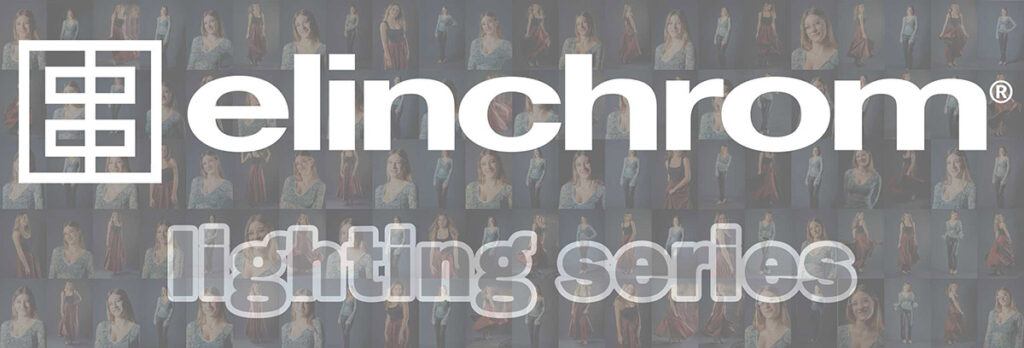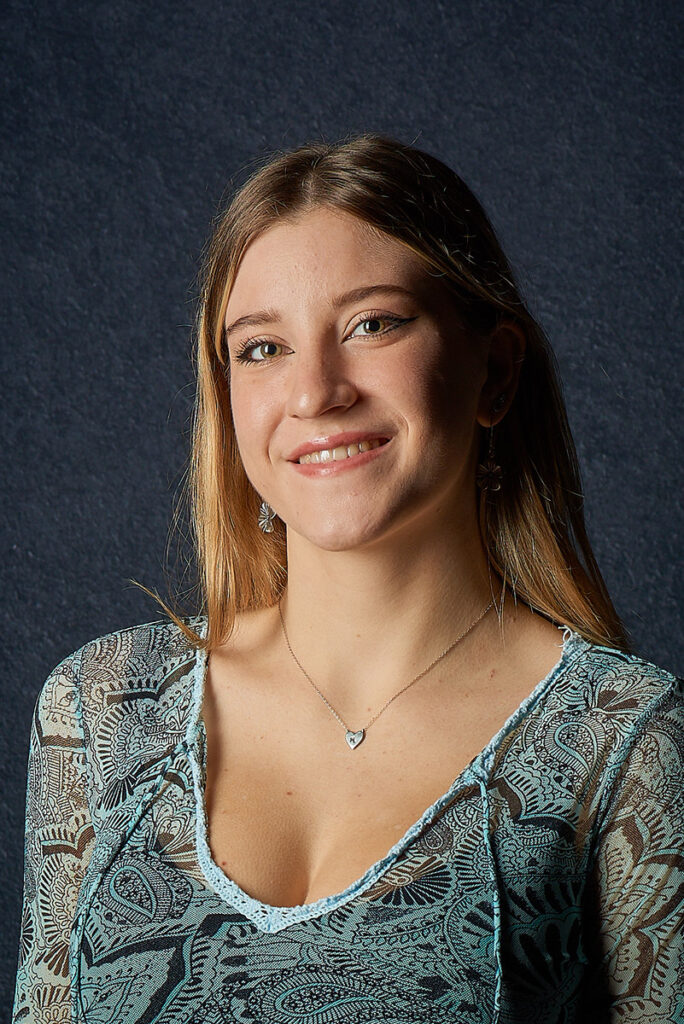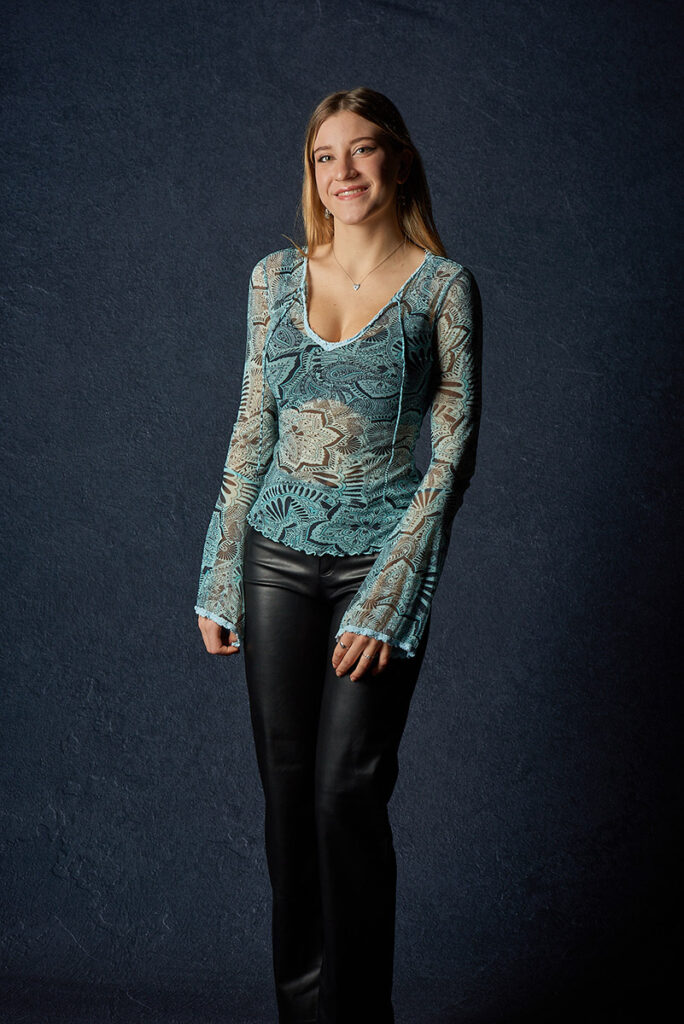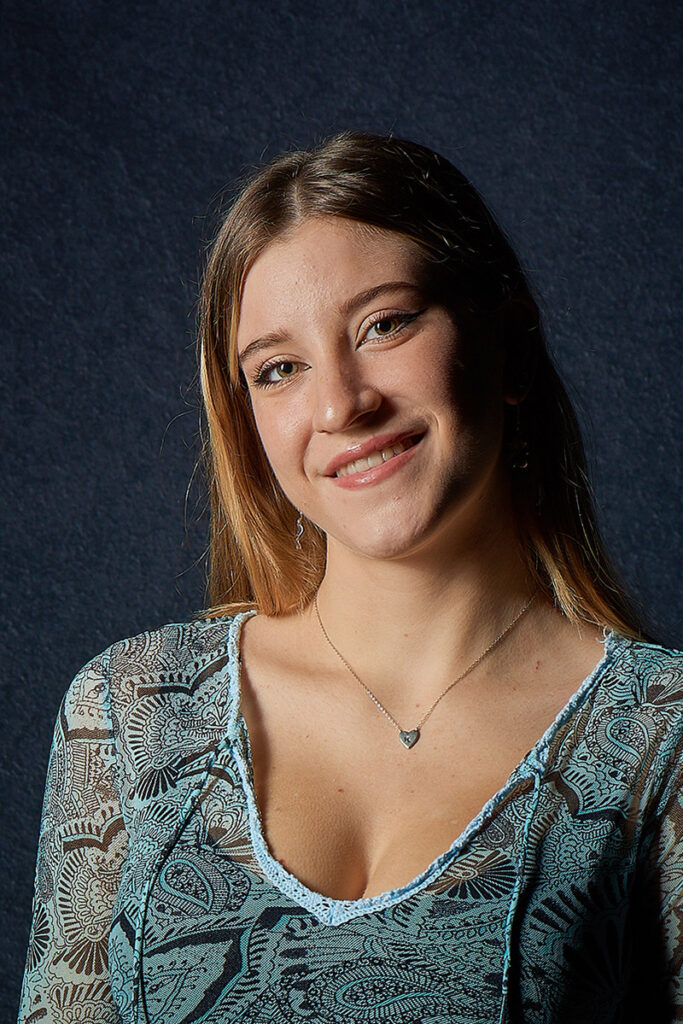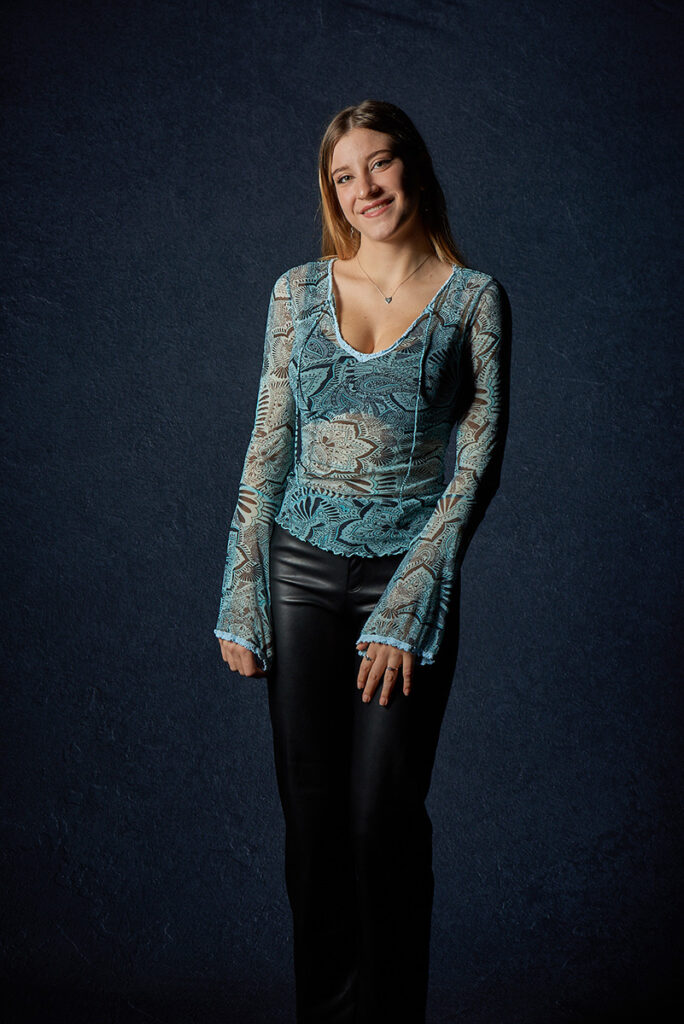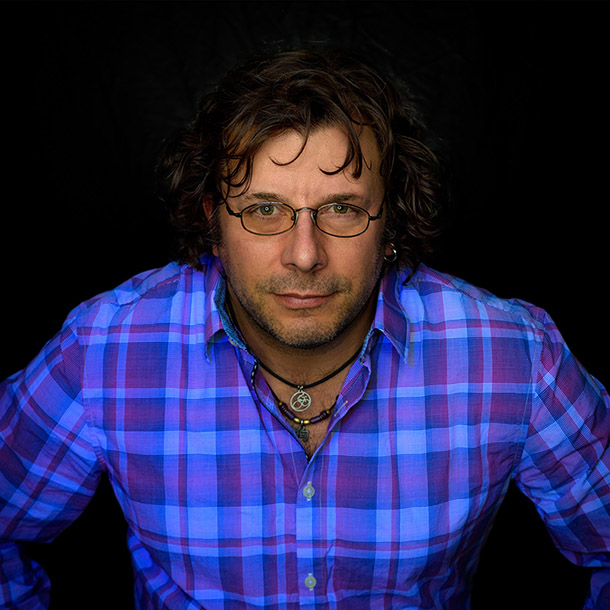Welcome to the seventh installment of our new monthly that highlights a different Elinchrom Light Shaper or Lighting Technique, with sample images (full length and cropped headshots) and lighting diagrams. All the images were photographed with the same model and outfit (standing in the same spot on the background – about 3 feet away), the same day in the same blacked out studio, with the same strobes at the same height (forehead height) & distance (about 5 feet) from the model and the same camera setup. I tried to remove as many obstacles as possible so we can compare light shaper effects.
I used an Elinchrom FIVE battery monolight triggered by the Elinchrom Transmitter Pro. My trusty Gossen Digisky light meter ensured consistent exposure values – it has an integrated Skyport transceiver to remotely trigger the FIVE. My Nikon D810 had a Tamron 85mm f/1.8 lens and all was mounted on a Vanguard VEO 3+ 263CB tripod. Camera settings are ISO64, f/8, 1/125s We used an Easiframe backdrop system with the Grey Texture backdrop. I tethered my camera into Capture One on my laptop with a Tether Pro USB-C to C cable and connected my laptop to a large screen TV with a TetherPro HDMI cable so we could review images on the big screen.
Special thanks to Phil and RevPrint Studio (https://www.revprint.com) for the use of their space. Phil hosts workshops featuring Elinchrom gear via West Toronto Photography Group (https://www.wtpg.ngo/)
I’ll start with light shapers and techniques for portraiture. This month, our focus is on the Elinchrom Rectangular softboxes, with and without the optional textile grids, specifically the Rotalux 50x130cm Strip Softbox.
Strip softboxes are usually owned in pairs, and you will see why in a future article where I put these to practical use. Elinchrom offers a few different sizes of softbox – the 35×100 and 50x130cm Strip softboxes, 60×80 and 90x110cm Recta Softboxes and 70×70 and 100x100cm Square softboxes. The light from the square and rectangular softboxes is very similar – the key differences are that you can rotate the rectangular softboxes for a wraparound light and the catchlights are different. An interesting note – in Europe, square softboxes are more popular; in North America, rectangular softboxes are preferred. I realized why this when I last travelled to Europe – most of the windows are square whereas most windows in North America are rectangular. This means that your catchlights will more closely match what you’re used to seeing in your native land. At least, this sounds as plausible as any argument I’ve heard.
I chose the Rotalux 50x140cm Strip Softbox as I felt the light would be most noticeable, being a rectangular softbox, and the size is perfect for illuminating full body portraits such as these. I did lower the height of the strobe due to the size of the stripbox – the top of the stripbox is just over Maya’s head so I could have more even illumination.
Softboxes, when used with lights with exposed flashtubes, create a fairly even lighting pattern with predictable falloff. The exposure is consistent within a stop from top to bottom. You can see Maya is lit from the top of her head to her ankles, with some falloff just below her knees. There is a distinct shadow on the background.
Looking at the cropped headshot, we can see nice even light with good contrast and shadow definition, with a pleasing shadow that follows her noseline. Highlights aren’t blown out. The catchlights in her eyes are a nice size and shape.
Adding the textile grid acts as you would expect – contrast increases and the shadows become deeper. There is a bit more fall-off but it’s not that dramatic. Due to the size of the stripbox, the addition of the grid is not as dramatic as adding a grid to the Standard Reflector.
I mentioned earlier that light from a softbox is fairly even as long as you use a strobe with an exposed flashtube. There are some lights that have a recessed flashtube – this works like a snoot and focuses the light into a centre hotspot. This design doesn’t work well with softboxes at all.
I use softboxes all the time in my work. Small softboxes are great for product work. Larger softboxes are ideal for portraiture – especially up close (I’ll show the effects of distance in the next issue). I regularly use stripboxes in my portraiture and commercial work. I use them regularly to separate a subject from its background – as hair lights overhead and from the rear. The above image of a printing machine was lit with three stripboxes (each side and above). I’ll often grid the stripbox to focus the light and prevent spill and flare into my lens. It’s also easier to control the amount of light falling on my subject – I can feather the light better if it’s gridded.
Share some of your favourite images taken with a softbox on our Facebook page or tag us on Instagram #photonewscanada #elinchromlightshaper.
Next month, I’ll show how distance affects your light. At the end of the series, we’ll compare each of the Elinchrom light shapers to each other. See you next month!
Read the previous articles:
Elinchrom Light Shapers and Lighting Techniques – #Episode 1
Elinchrom Light Shapers and Lighting Techniques – #Episode 2
Elinchrom Light Shapers and Lighting Techniques – #Episode 3
Elinchrom Light Shapers and Lighting Techniques – #Episode 4
Elinchrom Light Shapers and Lighting Techniques – #Episode 5
Elinchrom Light Shapers and Lighting Techniques – #Episode 6
Items Discussed
Author: Will Prentice
A portrait, fine art and commercial photographer for 30 plus years, Will Prentice is not just a contributor to PHOTONews magazine, but also host of PHOTONewsTV, owner of Captura Photography+Imaging and Technical Support/Brand Manager for Amplis Foto, Canada’s largest distributor of photographic equipment.
Will teaches photographers of all skill levels how to improve their craft – from creative photo projects to picking the right gear for their needs to flattering lighting to getting the best expressions to creating final images for screen and print. His unique style of highly detailed images with perfect tonality, wide dynamic range and stunning colour is instantly recognizable. Commercial clients rely on Will’s creative eye and mastery of lighting.
When he’s not behind the camera or in front of a class, you’ll find Will outdoors in any weather – usually on one of his bikes or enjoying time with his grandchildren.



